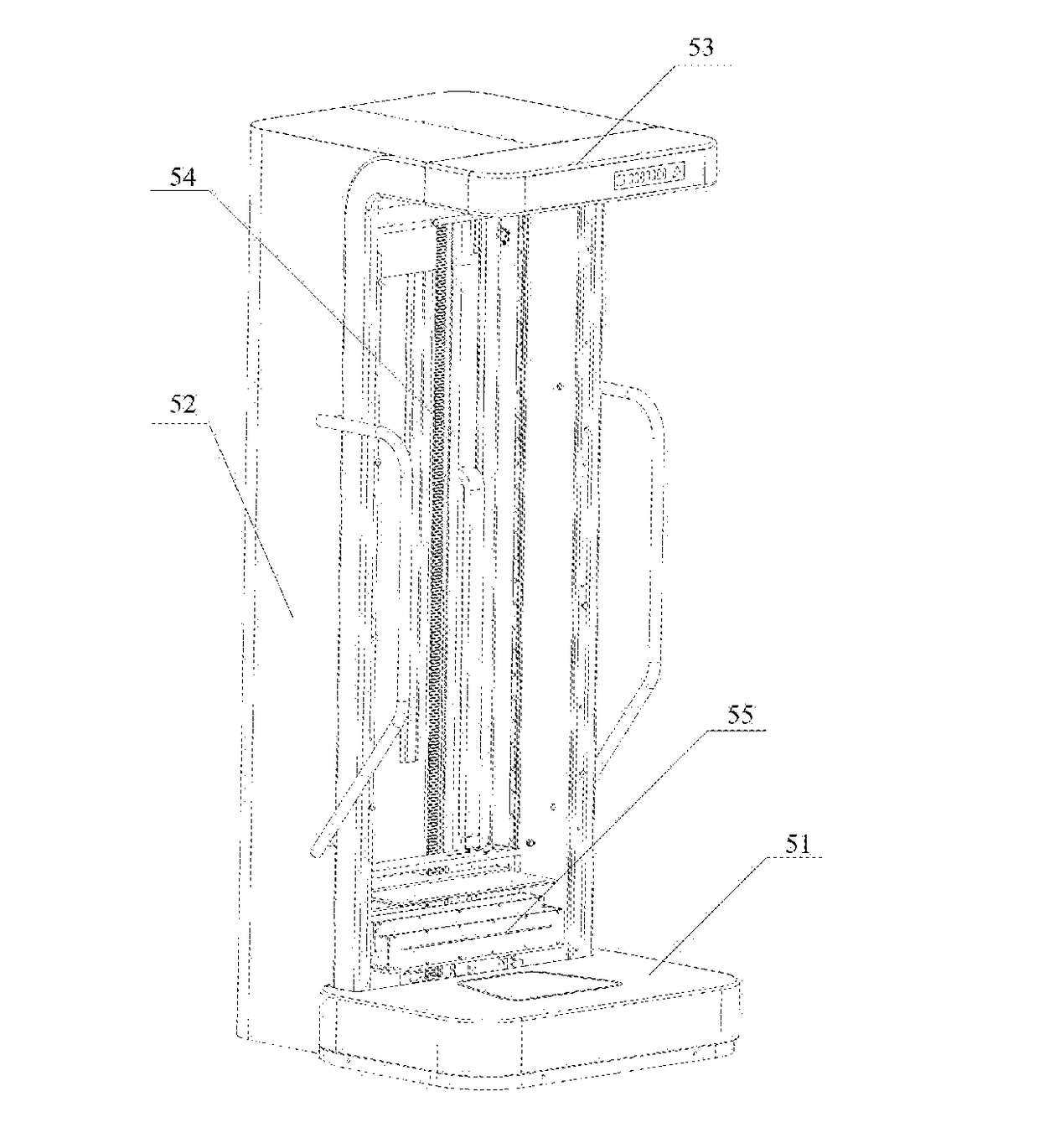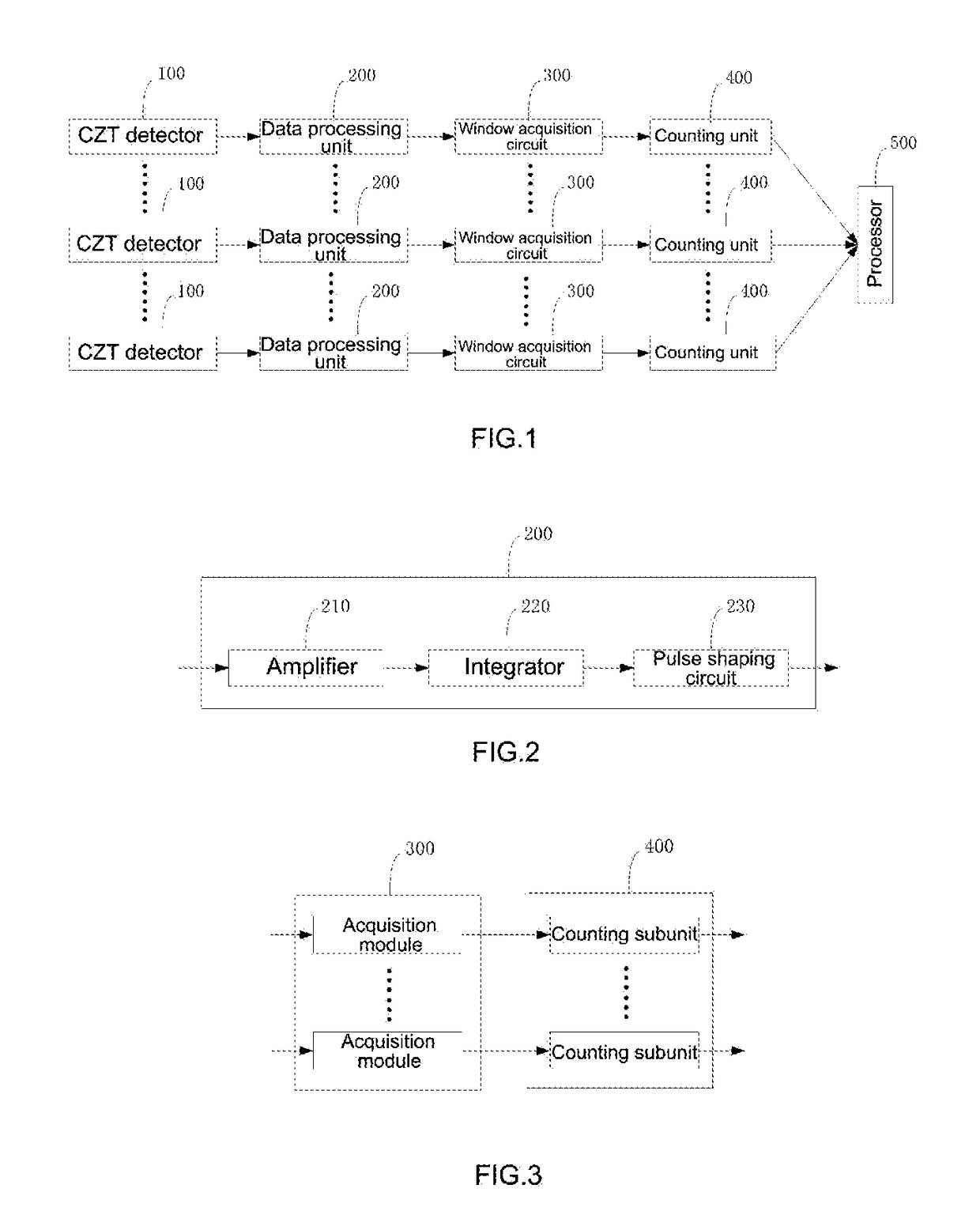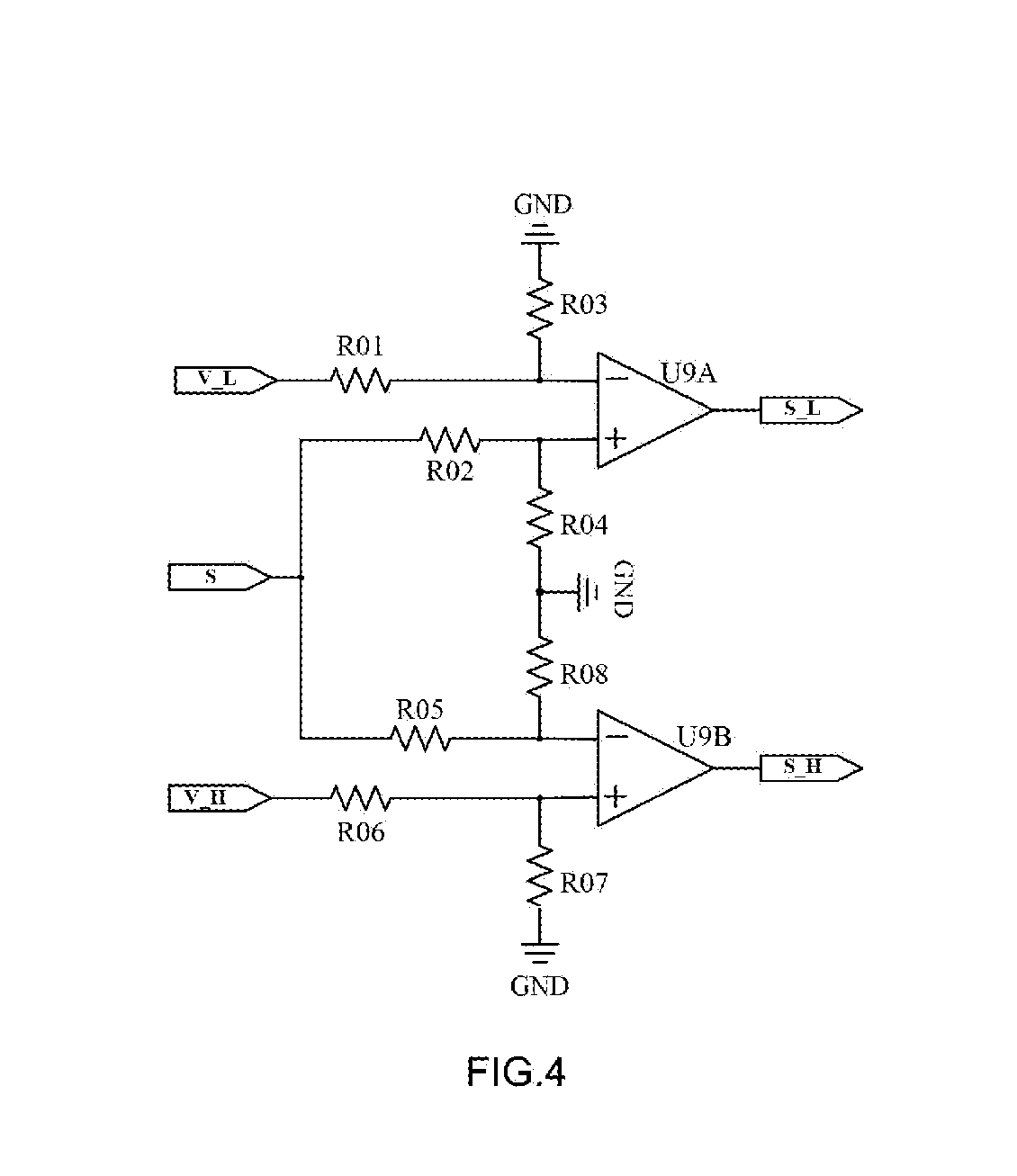Radiation Residue Scanning Device and System
a scanning device and residue technology, applied in the field of nuclear medicine imaging, can solve the problems of affecting the spatial resolution of images, the difficulty of detecting the energy peak of -rays at 284 kev from the compton plateau, and the prior residue scanning device still has problems, so as to reduce the width of the acquisition window, reduce the number of acquisition windows, and low detection efficiency
- Summary
- Abstract
- Description
- Claims
- Application Information
AI Technical Summary
Benefits of technology
Problems solved by technology
Method used
Image
Examples
first embodiment
[0042]FIG. 1 is a schematic diagram of the structure of a radiation residue scanning device provided in an embodiment of the present disclosure, and as shown in FIG. 1, the device includes a plurality of CZT (cadmium zinc telluride, CdZnTe) detectors 100, a plurality of data processing units 200, a plurality of window acquisition circuits 300, a plurality of counting units 400, and a processor 500. Specifically, the plurality of CZT detectors 100 are connected in one-to-one correspondence to the plurality of data processing units 200; the plurality of data processing units 200 are connected in one-to-one correspondence to the plurality of window acquisition circuits 300; and the plurality of window acquisition circuits 300 are connected in one-to-one correspondence to the plurality of counting units 400.
[0043]The CZT detector 100 captures γ-rays emitted from a patient's body. The γ-rays release photons and excite electrons by photoelectric effect or Compton effect to form a current ...
second embodiment
[0057]FIG. 5 shows a schematic diagram of the structure of a radiation residue scanning system provided in an embodiment of the present disclosure. As shown in FIG. 5, the system includes a base 51, a support body, a height measuring device, a lifting device 54, and a radiation residue scanning device 55 as in First Embodiment.
[0058]Here, the base 51 is connected to the support body for bearing a patient in a standing state. The height measuring device is mounted to the support body for measuring the height of the patient. The height measuring device is connected to the processor 500, and the processor 500 receives the above height and determines an initial scanning position and a final scanning position based on the height, and send a driving signal to the lifting device 54.
[0059]Specifically, the radiation residue scanning device 55 can be mounted in the lifting device 54, and the lifting device 54 can be mounted, movably up and down, to the support body, and electrically connecte...
PUM
 Login to View More
Login to View More Abstract
Description
Claims
Application Information
 Login to View More
Login to View More - R&D
- Intellectual Property
- Life Sciences
- Materials
- Tech Scout
- Unparalleled Data Quality
- Higher Quality Content
- 60% Fewer Hallucinations
Browse by: Latest US Patents, China's latest patents, Technical Efficacy Thesaurus, Application Domain, Technology Topic, Popular Technical Reports.
© 2025 PatSnap. All rights reserved.Legal|Privacy policy|Modern Slavery Act Transparency Statement|Sitemap|About US| Contact US: help@patsnap.com



